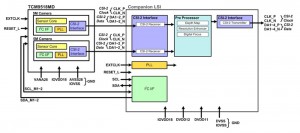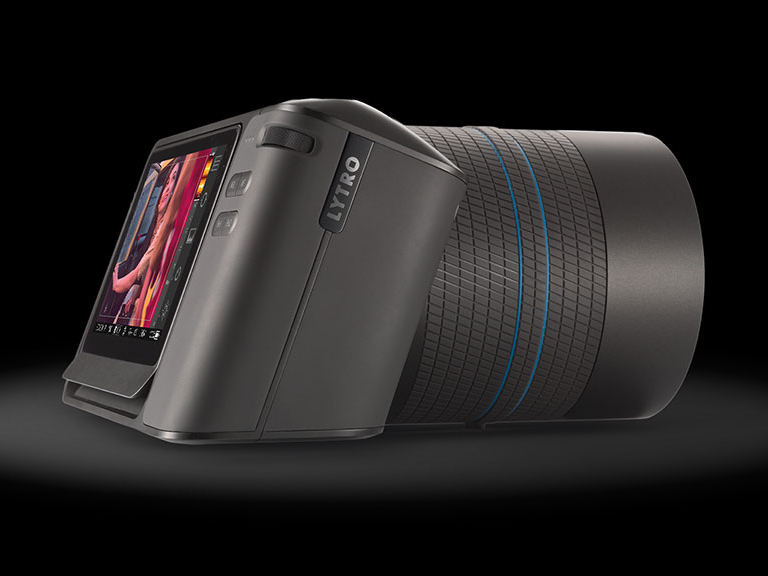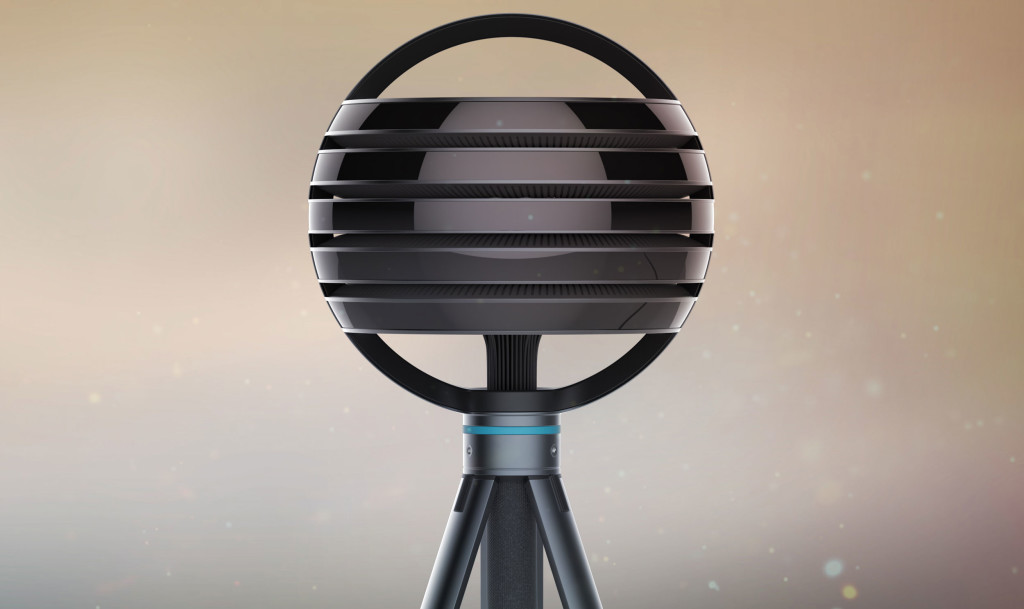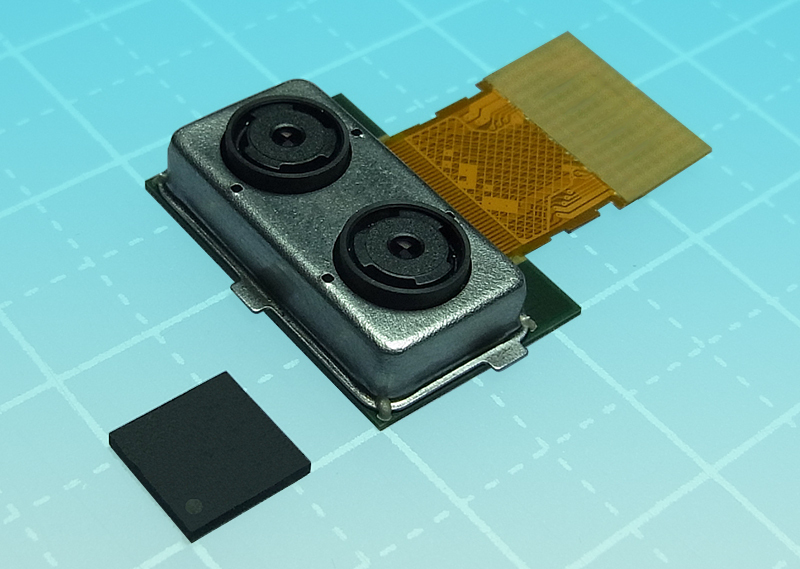Toshiba Dual-Kameramodul mit Software Refokus für Smartphones
 Tech-Gigant Toshiba erschien erstmals vor mehreren Monaten in der “Refokus-Welt”, als Berichte über ein in Entwicklung befindliches winziges Lichtfeld Kameramodul für Smartphones und Tablets auftauchten. Dem Erstartikel zufolge sollte der Prototyp “noch vor Ende des Geschäftsjahres 2013” in Massenproduktion gehen.
Tech-Gigant Toshiba erschien erstmals vor mehreren Monaten in der “Refokus-Welt”, als Berichte über ein in Entwicklung befindliches winziges Lichtfeld Kameramodul für Smartphones und Tablets auftauchten. Dem Erstartikel zufolge sollte der Prototyp “noch vor Ende des Geschäftsjahres 2013” in Massenproduktion gehen.
Letzte Woche enthüllte Toshiba erstmals offiziell ein Smartphone-Kameramodul mit Refokus-Features, aber das Produkt weicht deutlich von den älteren Berichten ab: Anstatt einer einzelnen Kamera mit 1 cm2 Grundfläche, 8-13 Megapixel Sensor, 500.000 Microlinsen und einer effektiven Auflösung von 2 Megapipxeln (6 MP im zweiten Prototypen), besteht der neueste Prototyp namens TCM9518MD aus zwei 5-Megapixel-Kameras, einem sogenannten Large Scale Integrated (LSI) Chip und verzichtet völlig auf Mikrolinsen.
In der offiziellen Presseaussendung gab Toshiba bekannt, dass das Dual-Kameramodul Software-Refokus und ähnliche Features, aber keine 3D-Funktionalität. Das Modul soll 5000 Yen kosten (ca. 38 Euro). Musterexemplare werden ab Januar 2014 zur Verfügung stehen, und die Massenproduktion soll im April 2014 anlaufen.
 Toshibas brandneues Kameramodul nimmt zwei 5 MP Bilder auf und nutzt den zugehörigen LSI Chip, um daraus Tiefendaten sowie ein hochgerechnetes 13 MP Bild zu erstellen. Benutzer/innen können die Bilder nach der Aufnahme refokussieren und Vollschärfe-Bilder (“Alles in Fokus”, “Deep Fokus”) exportieren. Das System vesrpricht “superschnellen digitalen Fokus” und wenig bis gar keine Auslöseverzögerung. Weil die üblichen Fokus-Motoren nicht gebraucht werden, kann das Modul zudem deutlich dünner gebaut werden (4,65 mm) als aktuelle 13 MP Kameramodule.
Toshibas brandneues Kameramodul nimmt zwei 5 MP Bilder auf und nutzt den zugehörigen LSI Chip, um daraus Tiefendaten sowie ein hochgerechnetes 13 MP Bild zu erstellen. Benutzer/innen können die Bilder nach der Aufnahme refokussieren und Vollschärfe-Bilder (“Alles in Fokus”, “Deep Fokus”) exportieren. Das System vesrpricht “superschnellen digitalen Fokus” und wenig bis gar keine Auslöseverzögerung. Weil die üblichen Fokus-Motoren nicht gebraucht werden, kann das Modul zudem deutlich dünner gebaut werden (4,65 mm) als aktuelle 13 MP Kameramodule.
Unter den von Toshiba vorgesehenen Features sind Software Refokus, “Deep Fokus“, tiefenabhängige Bildbearbeitung (Extraktion/Entfernen/Ersetzen von Objekten) und Gesten-Kontrolle.
Produktdetails und Spezifikationen:
Produktnummer: TCM9518MD
Stückpreis: 5000 Japanische Yen
Musterexemplare ab: Januar 2014
Massenproduktion ab: April 2014
Massenproduktionsrate: 500.000 Stück pro Monat
Objektiv: 4 Elemente, f/2.4, 61,8 ° (horizontales) Gesichtsfeld (FOV)
Sensoren: 1/4-Zoll CMOS (5 MP Auflösung, 1,4 µm Pixelgröße, Progressive Scan Shutter) x 2
Ausgabe: 13 MP Einzelbild, 5 MP (5 MP x 2 Modus / 5 MP x 1 Modus), Tiefenkarte (VGA)
Framerate: 24 fps bei voller Auflösung, 30 fps @1080p, 60 fps @720p, 120 fps @VGA
Modulgröße: 8,0 x 12,0 x 4,65 mm
Weil das Modul keine echte Lichtfeld-Technologie enthält, werden einige typische Lichtfeld-Features wie Perspektive oder 3D. Es klingt allerdings ideal für Smartphones, Tablets und andere Geräte, bei denen Größe eine wichtige Rolle spielt.
Was hälst du von den Kamera-Details? Wärst du an einem Smartphone mit Refokus-Features interessiert? Würde es dich stören, dass andere Lichtfeld-Features “eingespart” wurden? Sag’ uns deine Meinung im Kommentarbereich!
Hier gibt’s die offizielle Presseaussendung von Toshiba:
Toshiba Announces Industry’s First Dual Camera Module Enabling Simultaneous Output of Images and Depth Data
Contributes to Create a Wide Range of Applications Including Post Focus on Images after Taking PictureTOKYO – Toshiba Corporation (TOKYO: 6502) today announced that it has launched the industry’s first[1] dual camera module for smartphones, tablets and mobile devices. “TCM9518MD” incorporates twin 1/4 inch optical format 5-megapixel CMOS camera modules (5 megapixels × 2 arrays) and simultaneously outputs recorded images and depth data. Images captured with the module can subsequently be manipulated to change the depth of field and point of focus. Samples will be available by January 2014, with mass production scheduled for April 2014.
The dedicated companion LSI of the “TCM9518MD” measures and appends depth data to objects in the image. These data can be used for a wide variety of applications, including focus and defocus, and even to extract and erase objects from the picture. Used in combination with customers’ applications, the module supports the creation of new functions.
The companion LSI generates 13-megapixel images by upscaling images taken by the twin 5-megapixel cameras, realizing a lower module height than that of conventional 13 megapixel camera modules[2].
Computational cameras create images impossible to realize with the standard camera module by combining optical hardware technology-the lens and diaphragm-with digital signal processing technology. The TCM9518MD brings high resolution and computational camera functionalities to the CMOS image sensor market for smartphones, tablets and mobile devices.
Summary of the New Product
Part Number: TCM9518MD
Sample Price: 5000 Yen
Sample Schedule: January 2014
Mass Production Schedule: April 2014
Mass Production Volume: 500 thousand pieces per monthKey Features of the New Product
Simultaneous Output of Depth Data (Depth Map) and Deep Focus Image
The TCM9518MD’s twin cameras and dedicate companion LSI simultaneously deliver deep focus images in which foreground and background and all points in between are in focus, with depth data on each object in the image. This supports creation of new applications for smartphone, tablets and mobile devices, including refocus, defocus and extraction of any objects of the images, and gesture operation.
Output of 13 Megapixel Image
The companion LSI generates 13-megapixel photographs by upscaling images captured by the twin 5 megapixel cameras. This will contribute to downsizing of mobile devices.
Digital Focus Function
Most of auto focus camera modules for smartphones deploy a mechanical focus structure, moving the lens with motors like VCM[3]. It can take time to focus and also result shutter lag. TCM9518MD offers a non-mechanical digital focus function without mechanical structure, allowing high speed focus by calculating the depth to any objects[4]. It also realizes a lower module height.
Main Specifications
Part Number TCM9518MD
Output Resolution 13 megapixels
Sensor and Resolution 5 megapixels × 2
Optical Size 1/4 inch × 2
Pixel Size 1.4 micrometer
Module Size 8.0 × 12.0 × 4.65 mmNotes:
[1] For dual camera module with the companion LSI which output depth data. Source: Toshiba, as of September 2013.
[2] Generally for single camera modules, a bigger output image size requires a higher camera module. This product is lower than commercial 13-megapixel camera modules. Source: Toshiba, as of September 2013.
[3] Voice Coil Motor: a motor that moves a lens by applying an electrical current to a coil.
[4] Deep focus image output is not available when using a digital focus function.







Neueste Kommentare